There’s a creek freak in every fly fisher, even if it's compartmentalized away, deep in the emotional recesses of our psyches. Most of us who have fly fished for years — decades, even — cut our angling teeth on small water. That we’ve left these out-of-the-way little angling destinations for bigger waters and more sophisticated challenges is a bit unfortunate. For these diminutive waters still hold valuable lessons.
At worst, small streams offer every angler a refresher course — a chance to go back to school and re-learn some of the lessons that might have been forgotten in the years since we moved on to trophy trout waters or even more complex fly fishing disciplines, like saltwater flats fishing or stillwater fly fishing for bass or pike.
I grew up fishing the high-country creeks of Colorado — I had two grandfathers who put the time in, standing at my elbows, as I crafted a solid fly cast, learned the basics of trout stream entomology and even a bit about trout biology. Without them and their appreciation for the small trout waters of the Centennial State, I may never have picked up a fly rod.
Truth be told, if given the chance, I’d much rather wander the banks of a remote trout creek than participate in any other fly fishing “discipline.” These small waters formed a strong fly fishing foundation for me, and chasing trout — big and small — in little creeks remains my favorite pastime.
But, it was also these small streams that inspired in me the desire to move on … to matriculate to the next step or to the next achievement. As the years passed, and I delved deeper into the fly fishing universe, other fish and other destinations sent out their siren calls.
And I answered them. The last half of my fly fishing journey to date has been filled with far-flung voyages to other states, countries and other continents, where I’ve abandoned my small-water origins and, instead, taken to chasing everything from bonefish and permit on distant salty flats to the rangy bowfin of the southern swamps. These fish have absolutely nothing to do with small-stream trout.
But they have everything to do with the lessons I learned on those hidden creeks, boulder-hopping my way up secluded canyons or bushwhacking through the willows to stand at the foot of quiet beaver ponds in hopes of casting to hidden trout that rarely see flies.
One thing I’ve come to know about small streams is that they are no different than bigger waters. They just appear in sharper focus. How so? Consider this.
Reading the water
As fly fishers, we’re all blessed (or burdened?) with the ability to “read the water.” For some, the ability is innate — these are the truly talented among us, who take fly fishing to levels beyond the average trout bum’s comprehension. But even the most casual fly fisher possesses the trait to some extent. And, chances are, they learned what they know about the world’s trophy trout rivers by first fishing hidden trout streams that, with a running start, they might have been able to leap across when they were younger and more agile.
Small streams offer a macro classroom for reading all kinds of water. They feature all the same structural amenities as bigger waters, but they appear at our feet, within range of short casts. Undercut banks and overhanging branches? You bet. Rocks and ledges that slow the current and offer prime holding water? Sure thing. Scoured bends and deep, dark pools? Absolutely. And, on small water, these features tend to appear in rapid succession, sometimes just a few steps away from one another.
These structural features are the fly fishing alphabet. Or, for the mathematically inclined, the natural times tables that, in time, become second nature. And as we assemble the letters or construct the equations, we come to understand how these features offer trout everything from simple security to nutritional assembly lines. We know that trout might hold both in front of and behind sizable mid-stream rocks or logs. We know that trout will lie close to the banks in deeper water, where they can grab food floating by while remaining safe from overhead predators, like ospreys or eagles. We know that trout will find “pockets” of slower water, where they’ll expend less energy while they hunt for sustenance. We even know that something somewhat ethereal — like a foam line or a shadow — is often all it takes for a trout to go from wary to hungry.
All of these small-water features come together in our heads and help us determine where to cast, what to cast and generally what to expect appear in larger trout waters and grander scales. What we learn on small waters translates as we “graduate” to other, more challenging situations.
Break big water down
It’s often been said that big rivers are really a conglomeration of small streams — that different current seams and varied in-stream features come together in bigger rivers and create a variety of challenges for fly fishers. I certainly believe that. And I believe that, by using the skills we picked up in our formative fly fishing years on smaller, intimate waters, we can just as effectively fish big water, just as we might fish a small out-of-the-way trout stream.
The trouble is, while our muscle memory can be honed exceptionally well by years spent fishing, we tend to forget the lessons we picked up as younger anglers if we don’t occasionally “go back to school” and refresh ourselves.
For that reason, I highly recommend spending at least a day or two every season probing small water for trout — big or small. These little meandering creeks and mountain freestoners are real-life angling classrooms, and spending time on them now and then will make most of us better anglers. Or, at the very least, they offer us a quiet and generally private place to practice everything from roll casts and reach casts to more sophisticated methods, like single-handed spey casts or high-sticking flies through likely runs.
Then, as we tackle a bigger river and dissect the water, we’ll come to realize that the “work” we put in on smaller waters is worthwhile. A wide, sweeping trout river, like the Delaware, the North Platte or the Deschutes can be tackled a slice of water at a time, just like we might approach a small stream that offers its features on a compact scale.
Instead of looking at a big trout river as one massive water body, we can take our small-stream lessons and approach it a run at a time. We can focus on one cut bank, one riffle or one foam line. Doing so can help us feel a bit less overwhelmed, particularly when tackling water that’s new to us. These individual features can be considered small streams in their own right. For anglers just starting out on bigger waters, this approach can make fly fishing a bit less intimidating.
Final word
Fly fishing is full of nuances and lots of “if… then” situations that require genuine consideration. But, at some point in our fly fishing journeys, we’re all guilty of making the craft more complicated than it needs to be. Even the most nuanced fly-fishing situation, like casting diminutive flies over rising, yet stubborn, trout, can be carefully dissected to ensure that we’re using the skills we’ve picked up over time. And, I’d wager, we can trace those skills back to the trout-fishing classroom that smaller waters provided us, sometimes years ago.
So, the next time you’re on big water and you’re not sure how to approach the river, just go small. Literally dissect the river into its various features and put in the time on these small streams that come together to form a big river.
More importantly, make the time now and then to “go back to school,” and venture up some lonely blue line on the map in search of small-stream trout. It’s here where you’ll hone the skills that you’ll eventually put to use on bigger waters and bigger fish.




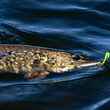

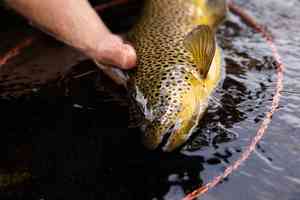

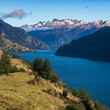
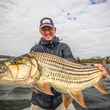
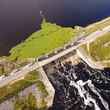

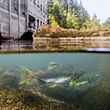

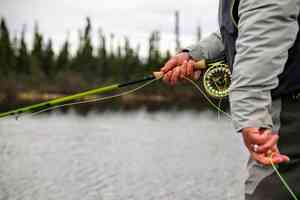

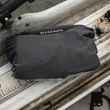
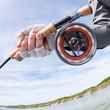
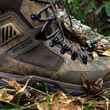



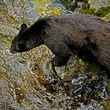
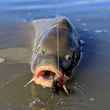
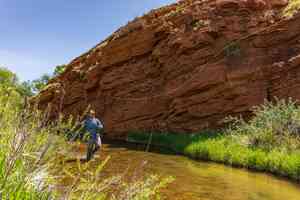




Comments